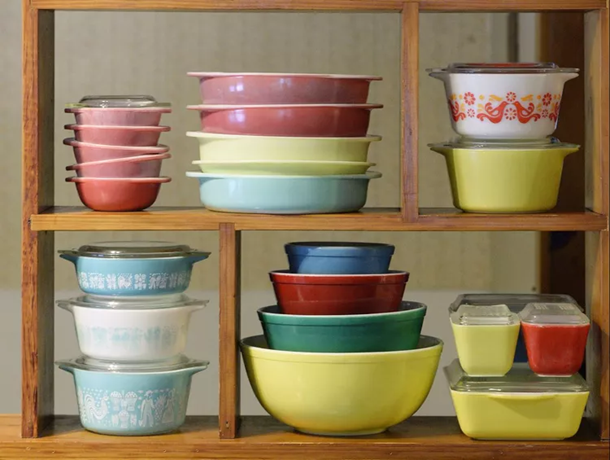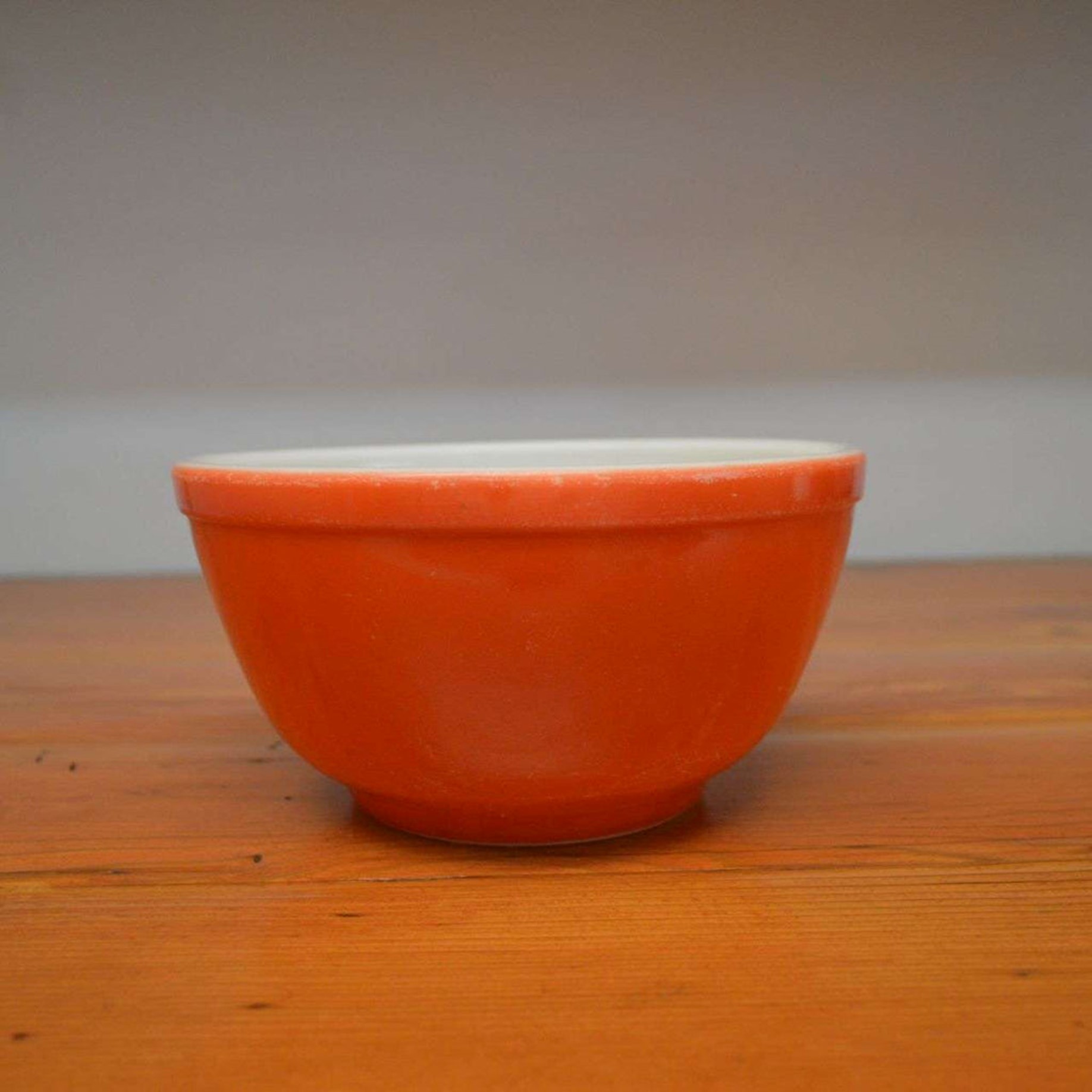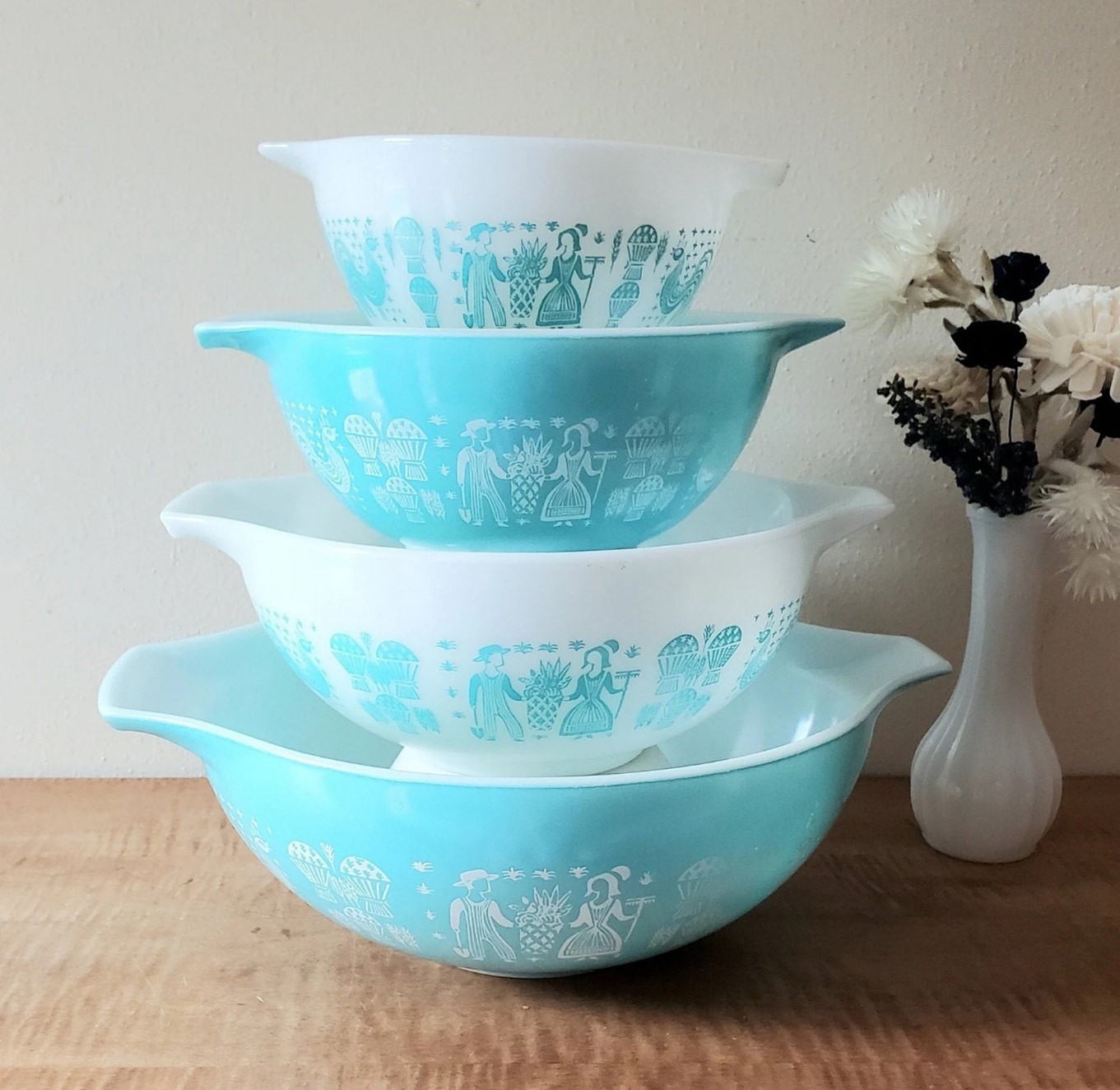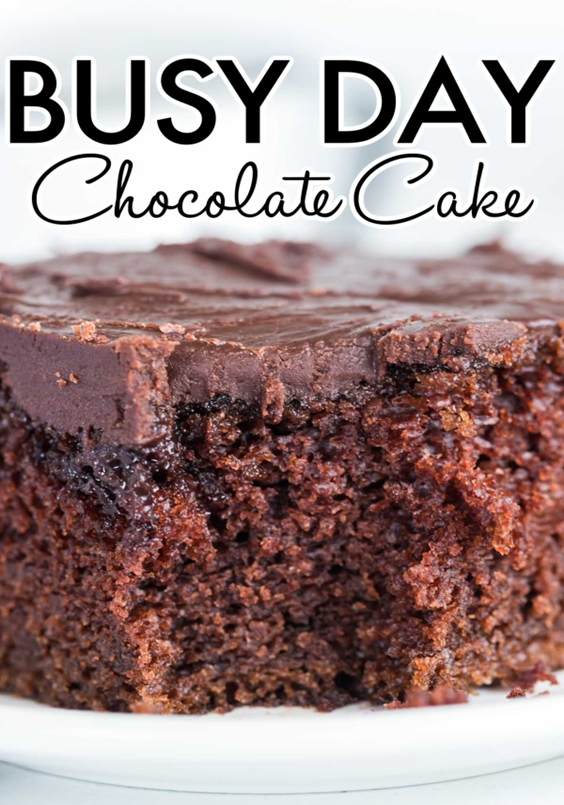You Might Have a Treasure Trove in Your Kitchen, Plus a One-Pot Dessert to Simplify Summer
Before I launch into my subject, here’s a fun piece of information I want to share, just because:
If you happen to have any vintage Pyrex, do you know what it’s worth? Martha Stewart talked about this is one of her latest newsletters. She says it’s attracting new admirers. Those of us who grew up with it are familiar with its durability and functionality. But younger folks are now appreciating its classic simplicity and beauty.

First of all, its worth depends on desirability and condition. For instance, a four-color, four-piece mixing bowl set can cost from $45 to $65.
Its condition must be tip top, though. Colored Pyrex must look shiny and new. A lot of it was faded by putting it in the dishwasher. (I have a few faded one-color pieces. I don’t care—I still love and use them all the time.)

Pyrex patterns determine value also. The 1956 Pink Daisy or the 1983 Colonial Mist—tend to be valuable as a collector's item. Other popular patterns include the 1957 Butterprint, which features an Amish couple and their crops, and has been valued at a few hundred dollars. You will want to identify which pattern you have and its year to determine how much it's worth in the marketplace. Depending on condition, expect anywhere from $100 per piece to $500 for a collection or a unique Hot 'N' Cold chip and dip set.
Practicality can also affect an item's allure. Take the Cinderella nesting bowls—a late 1950s design flanked by a pair of lips for gripping and pouring. It’s the design and not the decorative pattern that diminishes the worth. These are less popular with collectors than the lipless bowls, mostly because the lipped bowls take up a lot of room in kitchens.

Anyway, here’s me crossing my fingers for you Pyrex-owners. Maybe there’s a little treasure trove in your kitchen!
OK, now to my subject (which is also inspired by information in Martha’s latest newsletter): A one-pot dessert. I like this idea for the summer because it’s such a crazy-busy time of year, what with gardening, travel, family stuff, and all.

This is an easy sweet. “Easy” because it’s designed with the idea of keeping prep work and cleanup simple. We all know about the BUSY DAY CAKE (mixed right in the pan in which you bake it), but are you familiar with PHYLLO CHERRY CRISP? This jewel of a recipe proves that store-bought phyllo dough is the only way to go.

3 tablespoons plus 2 teaspons sugar
1/4 teaspoon ground cinnamon
6 sheets frozen phyllo pastry leaves trimmed to 11 x 16 inches
1/4 cup extra virgin olive oil
12 ounces (3 cups) sweet cherries pitted
Directions:
Add Recipe to Cook'n
If you happen to have any vintage Pyrex, do you know what it’s worth? Martha Stewart talked about this is one of her latest newsletters. She says it’s attracting new admirers. Those of us who grew up with it are familiar with its durability and functionality. But younger folks are now appreciating its classic simplicity and beauty.

First of all, its worth depends on desirability and condition. For instance, a four-color, four-piece mixing bowl set can cost from $45 to $65.
Its condition must be tip top, though. Colored Pyrex must look shiny and new. A lot of it was faded by putting it in the dishwasher. (I have a few faded one-color pieces. I don’t care—I still love and use them all the time.)

Pyrex patterns determine value also. The 1956 Pink Daisy or the 1983 Colonial Mist—tend to be valuable as a collector's item. Other popular patterns include the 1957 Butterprint, which features an Amish couple and their crops, and has been valued at a few hundred dollars. You will want to identify which pattern you have and its year to determine how much it's worth in the marketplace. Depending on condition, expect anywhere from $100 per piece to $500 for a collection or a unique Hot 'N' Cold chip and dip set.
Practicality can also affect an item's allure. Take the Cinderella nesting bowls—a late 1950s design flanked by a pair of lips for gripping and pouring. It’s the design and not the decorative pattern that diminishes the worth. These are less popular with collectors than the lipless bowls, mostly because the lipped bowls take up a lot of room in kitchens.

Anyway, here’s me crossing my fingers for you Pyrex-owners. Maybe there’s a little treasure trove in your kitchen!
OK, now to my subject (which is also inspired by information in Martha’s latest newsletter): A one-pot dessert. I like this idea for the summer because it’s such a crazy-busy time of year, what with gardening, travel, family stuff, and all.

This is an easy sweet. “Easy” because it’s designed with the idea of keeping prep work and cleanup simple. We all know about the BUSY DAY CAKE (mixed right in the pan in which you bake it), but are you familiar with PHYLLO CHERRY CRISP? This jewel of a recipe proves that store-bought phyllo dough is the only way to go.

Martha's Phyllo Cherry Crisp
Yield: 6 servings
Serving size: 1
Calories per serving: 975
Ingredients:
Serving size: 1
Calories per serving: 975
3 tablespoons plus 2 teaspons sugar
1/4 teaspoon ground cinnamon
6 sheets frozen phyllo pastry leaves trimmed to 11 x 16 inches
1/4 cup extra virgin olive oil
12 ounces (3 cups) sweet cherries pitted
Directions:
1. Preheat oven to 400 degrees.
3. Lay 1 phyllo sheet on a greased baking sheet (keep remaining pieces covered with a damp kitchen towel) and lightly brush entire surface with oil.
4. Sprinkle with 1 teaspoon cinnamon sugar. Repeat with remaining phyllo sheets. Arrange cherries on top. Sprinkle with remaining sugar.
5. Bake until crisp and golden brown, 15 to 17 minutes.
6. Cut into squares.
[NOTE: Alice substituted melted butter for the olive oil, just as an experiment. This was also truly delicious.]
3. Lay 1 phyllo sheet on a greased baking sheet (keep remaining pieces covered with a damp kitchen towel) and lightly brush entire surface with oil.
4. Sprinkle with 1 teaspoon cinnamon sugar. Repeat with remaining phyllo sheets. Arrange cherries on top. Sprinkle with remaining sugar.
5. Bake until crisp and golden brown, 15 to 17 minutes.
6. Cut into squares.
[NOTE: Alice substituted melted butter for the olive oil, just as an experiment. This was also truly delicious.]
Recipe formatted with the Cook'n Recipe Software from DVO Enterprises.
 Alice Osborne
Alice Osborne
Weekly Newsletter Contributor since 2006
Email the author! alice@dvo.com
